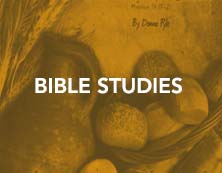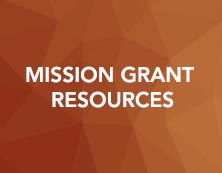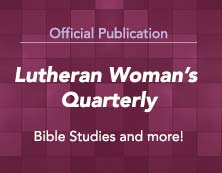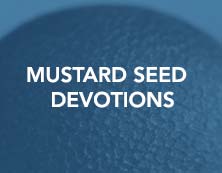Introduction
The Lord has given you special gifts. He has given you the opportunity to serve Him and the LWML as secretary. In this position you will have the opportunity to assist in having your organization function smoothly so that it can effectively fulfill its purpose statement.
The secretary’s primary responsibility is to keep an accurate record of the proceedings at all meetings of the organization. May these guidelines help you serve efficiently, confidently, and above all, with love and joy of the Savior so that others may know our God and His love.
Qualifications
The secretary should:
- have a basic understanding of parliamentary procedures;
- be familiar with group, zone, district, and national bylaws;
- be able to listen carefully and capture the actions taken in the meeting;
- be dedicated in service to the organization;
- be an example of Christian morals and principles to others;
- read the Bible and ask the Lord for guidance.
Duties
The secretary, in performing her duties, should:
- keep a permanent record of all proceedings of the organization, usually called minutes;
- keep a file of all committee reports and bring them to the meeting, if requested;
- keep an up-to-date copy of the organization’s bylaws and standing rules, listing all motions of continuing action adopted at the meetings;
- keep the organization’s official membership roll;
- make the minutes and records available to members upon request;
- notify officers, committee members, and delegates of their election or appointment;
- furnish committees with whatever documents are required for the performance of their duties;
- sign all certified copies of acts of the group, unless otherwise specified in the bylaws;
- notify members of special meetings.
Parliamentary Standing
The following procedures are appropriate:
- The secretary may enter into the discussion and vote at the meetings.
- In the absence of the president and vice president, the secretary should call the meeting to order and preside until a new chairman is chosen, if not otherwise designated in the organization’s bylaws.
Minutes
Minutes should include:
- the kind of meeting – regular, special, board, or executive committee;
- name of the organization;
- date, time, and place of the meeting;
- roll call – this determines if a quorum is present;
- name of the presiding officer and of the secretary or, in their absence, who substituted for them;
- whether the previous minutes were read (or, the reading was dispensed with) and approved or corrected and approved;
- summaries of all reports and the actions taken on them;
- all motions (unless withdrawn), name of the maker, if seconded (if necessary), and whether the motion was adopted or was rejected;
- a record of the type of vote taken; if other than a voice vote, indicate the vote count, if a counted vote;
- results of elections and appointments;
- hour of adjournment;
- signature of the secretary and (optional) the president.
Mechanics of the Minutes
Items to be remembered in writing minutes include:
- Minutes may be single-spaced or double-spaced. However, double-spacing makes it easier to write in corrections voted by the group at the following meeting.
- Record each item of business or each separate action of the group in a separate paragraph. Indent motions and results an extra five spaces so that they may be easily identified.
- Minutes should be expressed in an objective, businesslike way, excluding your personal opinions and interpretations.
- Avoid any suggestion of bias. In reporting a discussion, do not favor one side over the other.
- Adopt a formal but not legalistic tone, with emphasis on clarity and precision.
- When corrections of the minutes are approved, the secretary enters the corrections in ink on the original copy of the minutes, dates and initials the correction, or retypes the minutes as corrected.
- Draw a line through the words to be deleted and write the substituted words directly above.
- If a whole paragraph or section must be restated, draw a line through each line of copy and append the new paragraph or section. A note in red ink on the original should make reference to the addition to the minutes.
- Do not include the names of persons seconding motions, unless so directed.
Helpful Hints for “Good Minutes”
To record concise and clear minutes, keep the following in mind:
- Take accurate notes.
- Request clarification if you have doubts.
- Ask for motions or reports in writing if they are lengthy or complicated.
- Use correct terminology: minutes are approved; reports are heard, accepted, rejected, or sent back to the committee; motions are carried/adopted or rejected/lost; resolutions are passed; reviewer’s reports are accepted.
- Write the minutes as soon as possible after the meeting, before details are forgotten.
- Use a separate paragraph for each item of business for easy reference.
- The recording of any discussion regarding motions should not be in detail.
- When a count has been ordered or the vote is by ballot, the number of votes on each side should be entered. When voting is by roll call, the names of those voting on each side and those answering “Present” should be entered to reflect that a quorum was present for the vote.
Assisting the President
The secretary can be an invaluable support to the president by:
- helping to prepare meeting agendas – listing items of business that should receive attention and those items carried over from the previous meeting;
- having at each meeting copies of minutes, reports, and organizational reports that may be needed for reference;
- keeping a checklist of both unfinished and new business during the meeting so that no item is overlooked;
- reviewing the list of previous motions passed by the organization so that motions made do not violate the group, district, or national bylaws.
Sample Meeting Minutes
Minutes should include:
Minutes of (Name of organization)
Date
Meeting
The meeting of (Name of organization) was called to order at (time) by President (name) at (place). (Number) members and (number) guests were present. Opening devotion, (title), was led by (name).
Minutes
Minutes of the (date of last meting) meeting were read and approved.
Treasurer’s Report
The treasurer’s report indicated a beginning balance of (amount), receipts of (amount), disbursements of (amount), and an ending balance of (amount). The report was placed on file.
Circle Reports (if applicable)
Circle reports were given as follows:
Busy Hands Circle: meeting on first and third Tuesdays. A total of 56 quilts have been completed to date this year.
Monday Noon Bible Study: studying “The Face of Faith.” Members are collecting soap for Lutheran World Relief.
Unfinished Business
Publicity is underway to begin a new circle. It is scheduled to meet for six consecutive weeks each spring and fall. Jane Jones has volunteered to do organizational work. Sally Smith will lead the first Bible study titled “Ruth, Pathway of Praise.”
Discussion focused on the quarterly meeting of the (Name of the organization). The topic, (title), will be led by (name). Members of Lydia Circle will host the gathering.
New business
(Name of organization) women have been asked to host the Zone Spring Event. Sarah Green was appointed to chair the planning committee. Helen Brown moved to provide child care during the event. The motion was carried.
Announcements
The next meeting of (Name of organization) will be on (date) at (time) at (location).
Adjournment
The meeting was adjourned at (time).
(Name), Secretary









